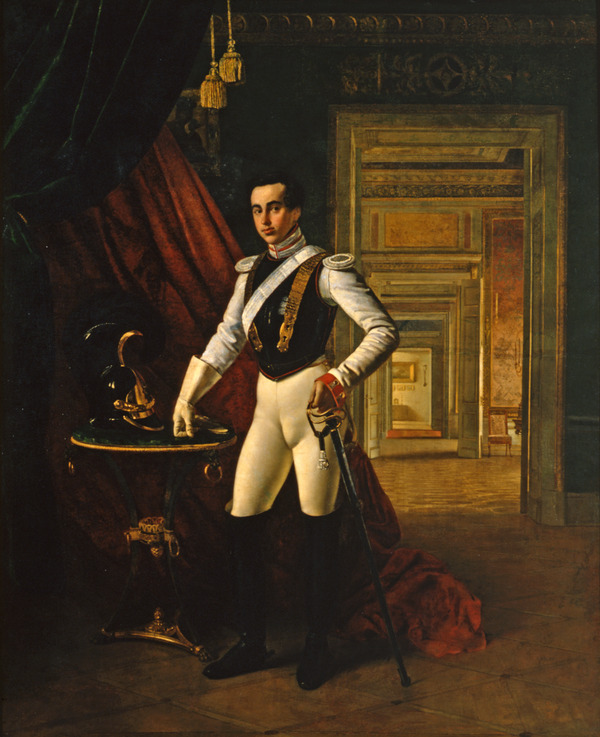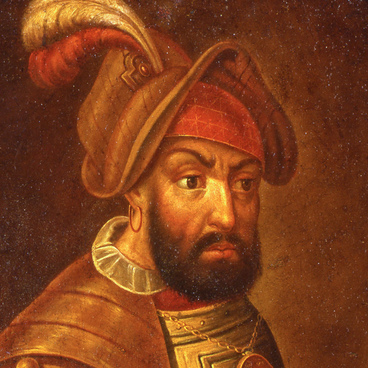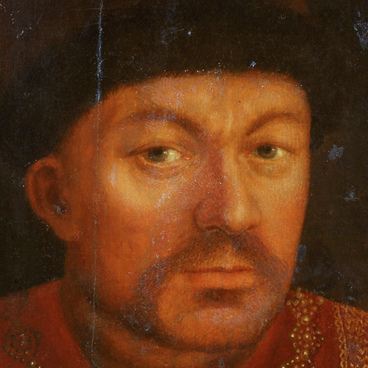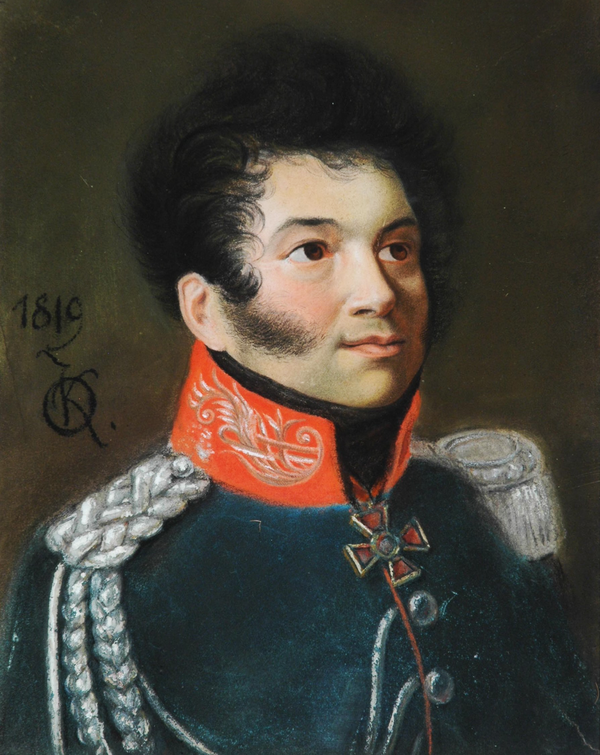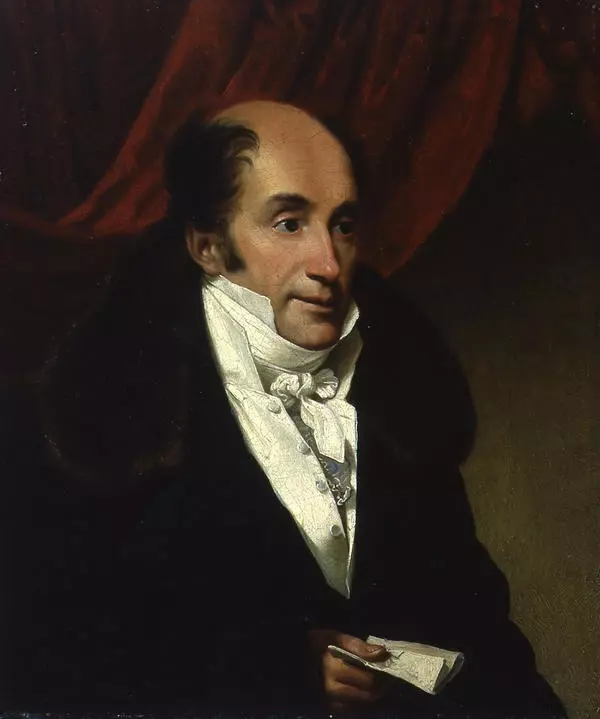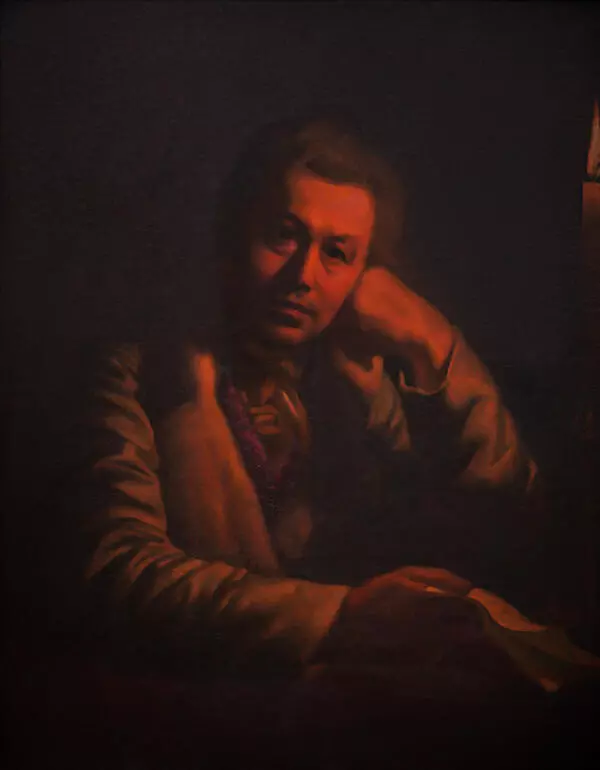The ceremonial portrait of Dmitry Sheremetev was painted by the famous Russian artist Orest Kiprensky, who was considered one of the best portraitists of the 19th century. Over the years, Kiprensky portrayed the Russian poets Alexander Pushkin and Vasily Zhukovsky, Prince Nikita Trubetskoy and the Russian statesman Sergey Uvarov.
This portrait was commissioned to complement the ceremonial image of Count Nikolay Sheremetev, created by Vladimir Borovikovsky in 1818–1819. Until the early 1920s, both paintings were housed in the Count Sheremetev’s Hospice, which is presently known as the Sheremetev Hospital on Sukharevskaya Square.
The painting by Orest Kiprensky portrays the 21-year-old Dmitry Sheremetev dressed in the Chevalier Guard Regiment uniform. Behind the man’s back there is a suite of rooms that constituted the second story of the Sheremetev Palace, also known as the Fountain House.
Dmitry Sheremetev was the son of Count Nikolay Sheremetev and the prominent Russian serf actress Praskovia Kovalyova, who also went by the stage name Zhemchugova. Praskovia died three weeks after giving birth, and the count passed away when his son Dmitry was only six years old. The young Sheremetev heir was taken under the wing of Empress Maria Feodorovna, the widow of Paul I. Dmitry received a comprehensive home education, and at the age of 20 he started to serve in the Chevalier Guard Regiment, which was a tradition for all the men of his family. Two years later, the regiment participated in crushing the Decembrist revolt and was later relocated to Poland, where an uprising was prepared against the Russian Empire. Dmitry Sheremetev received the Order of Saint Vladimir Fourth Class for his involvement in the Battle of Warsaw, and seven years later, he retired and began working for the Ministry of Internal Affairs.
This portrait was commissioned to complement the ceremonial image of Count Nikolay Sheremetev, created by Vladimir Borovikovsky in 1818–1819. Until the early 1920s, both paintings were housed in the Count Sheremetev’s Hospice, which is presently known as the Sheremetev Hospital on Sukharevskaya Square.
The painting by Orest Kiprensky portrays the 21-year-old Dmitry Sheremetev dressed in the Chevalier Guard Regiment uniform. Behind the man’s back there is a suite of rooms that constituted the second story of the Sheremetev Palace, also known as the Fountain House.
Dmitry Sheremetev was the son of Count Nikolay Sheremetev and the prominent Russian serf actress Praskovia Kovalyova, who also went by the stage name Zhemchugova. Praskovia died three weeks after giving birth, and the count passed away when his son Dmitry was only six years old. The young Sheremetev heir was taken under the wing of Empress Maria Feodorovna, the widow of Paul I. Dmitry received a comprehensive home education, and at the age of 20 he started to serve in the Chevalier Guard Regiment, which was a tradition for all the men of his family. Two years later, the regiment participated in crushing the Decembrist revolt and was later relocated to Poland, where an uprising was prepared against the Russian Empire. Dmitry Sheremetev received the Order of Saint Vladimir Fourth Class for his involvement in the Battle of Warsaw, and seven years later, he retired and began working for the Ministry of Internal Affairs.
Dmitry Sheremetev was a well-known philanthropist. He donated large amounts to Moscow cathedrals, monasteries, gymnasiums, the Sheremetev’s Hospice founded by his father and the Saint Petersburg University. Sheremetev’s generosity was even perpetuated in a common saying: the establishments that he supported were known as “living off Sheremetev”.

